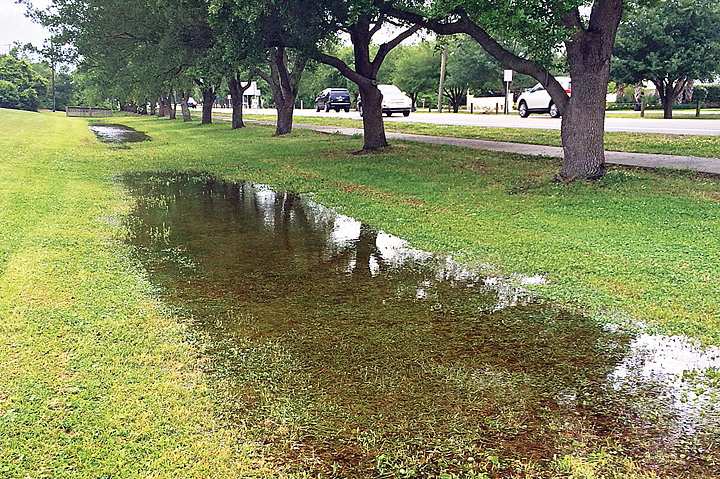Starting June 29, the public will be able to take a self-guided tour of Wrightsville Beach’s stormwater runoff reduction projects, many of which people walk by every day as they traverse the John Nesbitt Loop.
The initiative, Walk the Loop for Clean Water, highlights the efforts of Wrightsville Beach and the North Carolina Coastal Federation to prevent polluted stormwater from entering local waters. The Coastal Federation hosted a ribbon cutting ceremony June 29 at 4 p.m. to celebrate the self-guided tour’s opening.
People can follow the stops on the tour by either picking up a brochure from the Coastal Federation’s Salisbury Street office or accessing walktheloop.org. The stops, all of which are located around the loop, include swales, earthen dams, rain gardens, curb cuts and cisterns. The features divert stormwater away from Motts Channel, Banks Channel and Lees Cut and into Wrightsville Beach Park, where the water seeps into the sandy soil.
The federation was able to create the tour after receiving a $2,500 grant from RBC Wealth Management to create signage, printed brochures and the website. RBC awarded the grant because the Coastal Federation’s clean water efforts are in line with its Blue Water Project, an initiative to help provide drinkable, fishable and swimmable water for current and future generations.
So far, data has shown Wrightsville’s stormwater reduction projects have been successful in cutting down on pollution in local waters. Outfall pipes along Waynick Boulevard discharge stormwater from the road into Banks Channel, one of the most popular areas for swimming and paddleboarding. So the Coastal Federation received a grant to retrofit one of the pipes, located at Iula Street, and tests showed the project reduced the discharge of fecal coliform bacteria that previously flowed into Banks Channel from that pipe by 99 percent.
While effective, the Iula Street project was also expensive and required heavy equipment. But most of the projects on the self-guided tour are much simpler. The first people to take the tour, before the self-guided aspect was introduced, were young students, because the projects demonstrate such straightforward stormwater reduction methods.
“A lot of these are so simple, just a matter of rerouting your downspout from your driveway to your lawn,” said Nina Quaratella, an AmeriCorps member stationed at the federation. “So even a second grader can look at that and say, ‘Oh, I can talk about that with my parents and do that at my own house.’ It’s not a complex concept like fixing climate change. … These are simple techniques that are easy to apply to anyone’s house or office.”
Quaratella said about 75 students, ranging from second graders to Ashley High School’s Marine Science Academy, toured Wrightsville’s stormwater reduction projects in May. The feedback from both students and teachers has been positive so far, she said, so they’re planning to bring more classes on the tour this fall.
Many of the teachers have admitted learning new information from the tour, she added, and they’ve noted that it’s a good balance of content and activities. One of the best parts, she said, is that because the projects are so accessible, students can come back and see them anytime with their parents.
“When they walk or drive around the loop, they’ll notice these things now, and they can apply it to other places,” she said.
Email [email protected]




